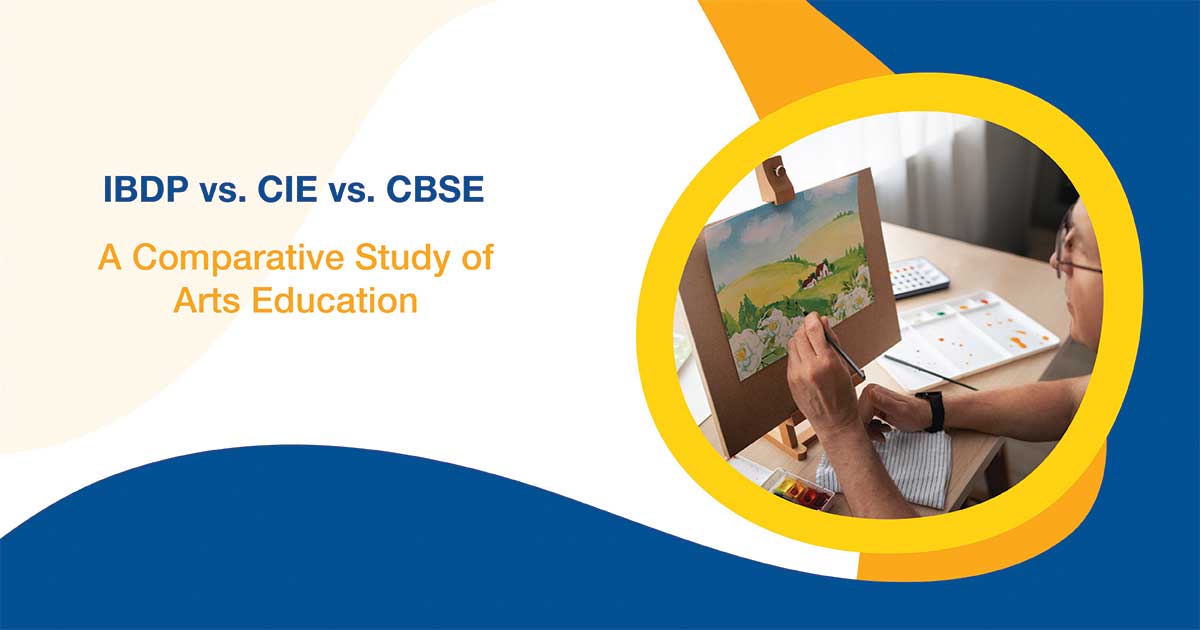

Learners who are contemplating career opportunities in design, performing arts, animation, or arts can opt for a Fine Arts course in their 12th-grade programme. IBDP offers a course in Arts, CIE offers an Arts and design course, and CBSE programme has Fine Arts as an elective course in the Humanities stream. All three courses offer an introduction to different art forms and have a unique approach to the subject. Let us take a look at the three courses and explore their scope after 12th grade.
Curriculum and Syllabus: IBDP
The IBDP Arts subject group has four courses which are Dance, Music, Films, Theatre, and Visual Arts. You can opt for a maximum of two courses from the subject group in Higher Level or Standard Level. The syllabus covers -
| Dance |
Music |
Films |
Theatre |
Visual Arts |
|
Composition and analysis, World dance studies, Performance |
Exploring music in context, Experimenting with Music, Presenting music, The contemporary music Maker (HL only) |
Reading Films, Contextualising Films, Exploring film production roles, Collaboratively producing film (HL only), Textual analysis, Comparative Study, Film portfolio, Collaborative film project |
Creating theatre based on theatre theory, Working with play texts, Examining world theatre traditions, Collaboratively creating original theatre |
Theoretical practice, Art-making practice, Curatorial practice |
The curriculum has internal and external assessments which include written exams, projects, and an exhibition.
Curriculum and Syllabus: CIE
The curriculum of the CIE IGCSE Art & Design course requires a learner to take one compulsory Component 1, which is a broad-based assignment and -
Component 2 - A design-based assignment
Or
Component 3 - A critical and historical assignment
Or
Component 4 - Coursework assignment
The course syllabus covers fine arts, graphic communication, three-dimensional design, and textiles and fashion. Within these broad courses, students will present a project in sculpting, ceramics, photography, theatre/set design, environmental/architectural design, or product design.
Curriculum and Syllabus: CBSE
The CBSE Fine Arts course has theoretical and practical components for which learners have to take written exams and prepare a portfolio of their work. Learners will learn concepts such as the six limbs of Indian painting, Visual Arts - Fundamentals, Elements and Principles, Drawing and painting, media of composition, sculpture, and graphics. The four alternatives in the Fine Arts course from which the student can choose any one Course -
|
Course |
Theory Topics |
Practical Topics |
|
Painting |
|
|
|
Graphics |
|
|
|
Sculpture |
|
|
|
Applied Art-Commercial Art |
|
|
Assessments: IBDP
In IBDP curriculum, learners will have both external and internal assessments and for SL, students have to attend 150 hours and HL 240 hours. For each course, there is -
Assessments: CIE
In the CIE assessment of the Art & Design course, for the first component, they will submit a portfolio of their work from the initial draft to the outcome. Component 2 is an externally set assignment for which learners record ideas and observations and present original images and secondary imagery and sources. They will demonstrate the use of different techniques, processes, and influences of culture and artists. In component 3, which is a Personal Investigation internal assignment, the learner has to submit one practical work and a written analysis of about 1500 words.
Assessments: CBSE
The assessment criteria for CBSE Fine Arts are the same for all four courses - to test their creativity, innovation, and technique. The theory subjects touch upon Indian Art history and students will learn about different styles and modes of art expression. They will write one written exam on the theory subject and the practical work they do throughout the year will be arranged in a portfolio, from the first sketch to the finished product.
Final Thought
The IBDP course has more practical application and stresses students using their creativity and innovation to produce original works of art. CBSE programme introduces learners to different Indian styles and grounds them in techniques that will help them innovate and produce original work. The CIE programme introduces learners to the global fine arts scene and helps them develop skills and techniques through demonstrable activities. All three courses come with their distinct advantage in providing learners with an early introduction to various art forms and career opportunities in fine arts.
Recent Blogs
Site Designed and Maintained By : Office of Communications, JAIN Group All rights reserved.